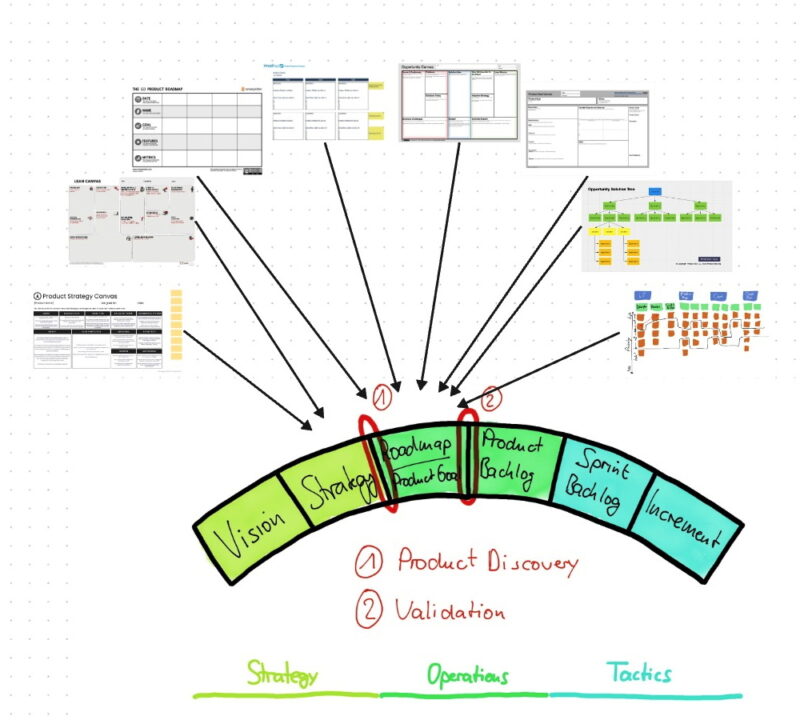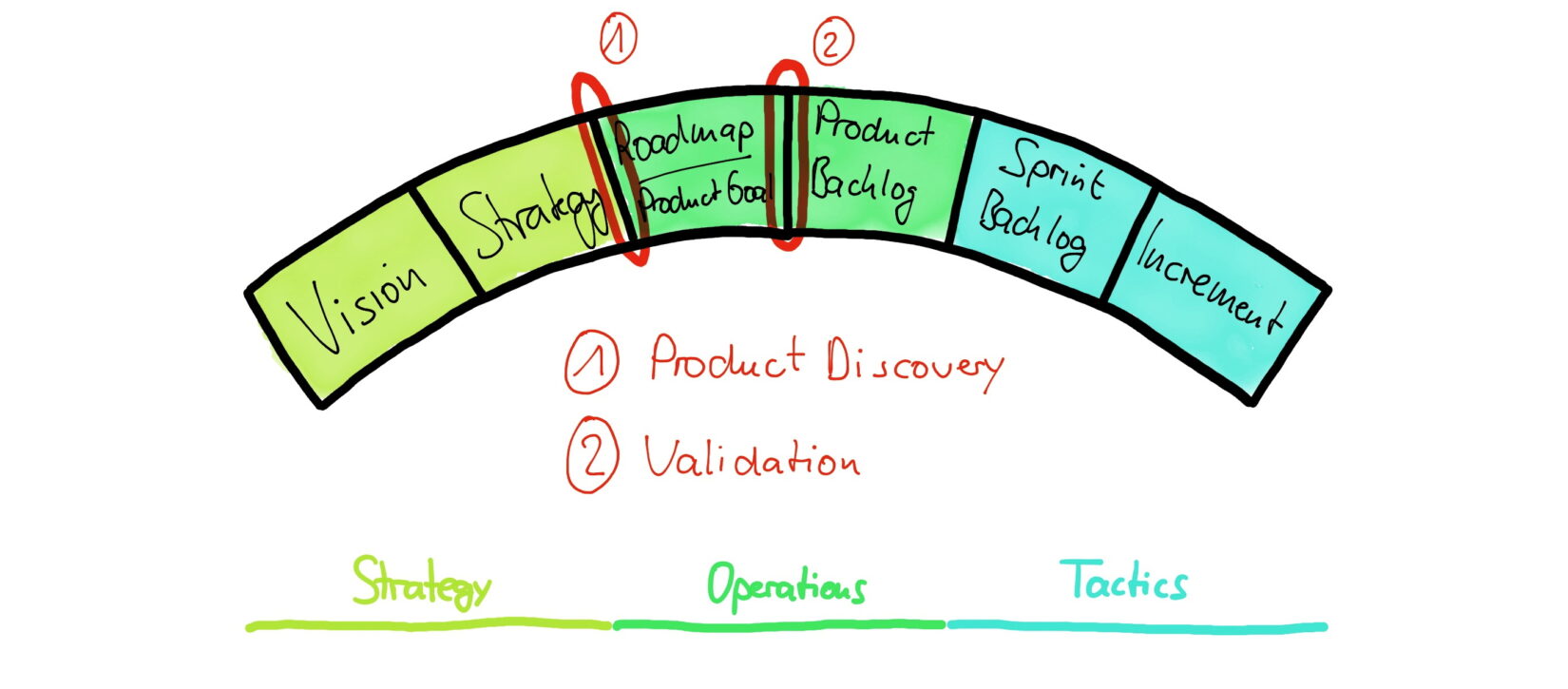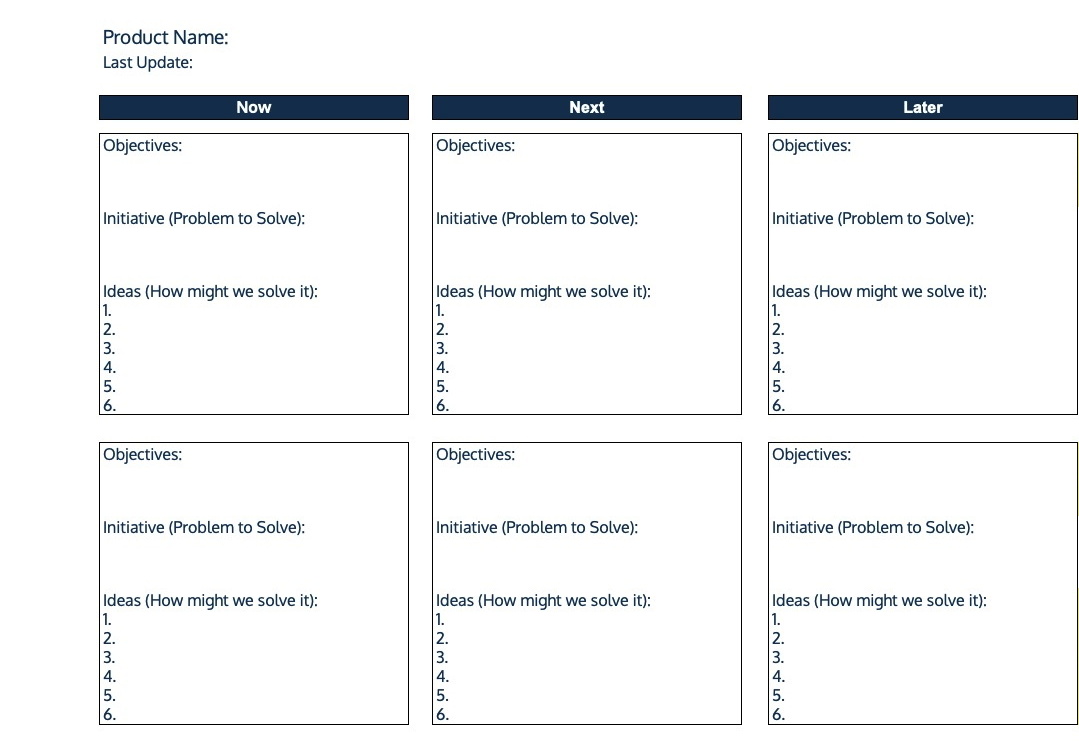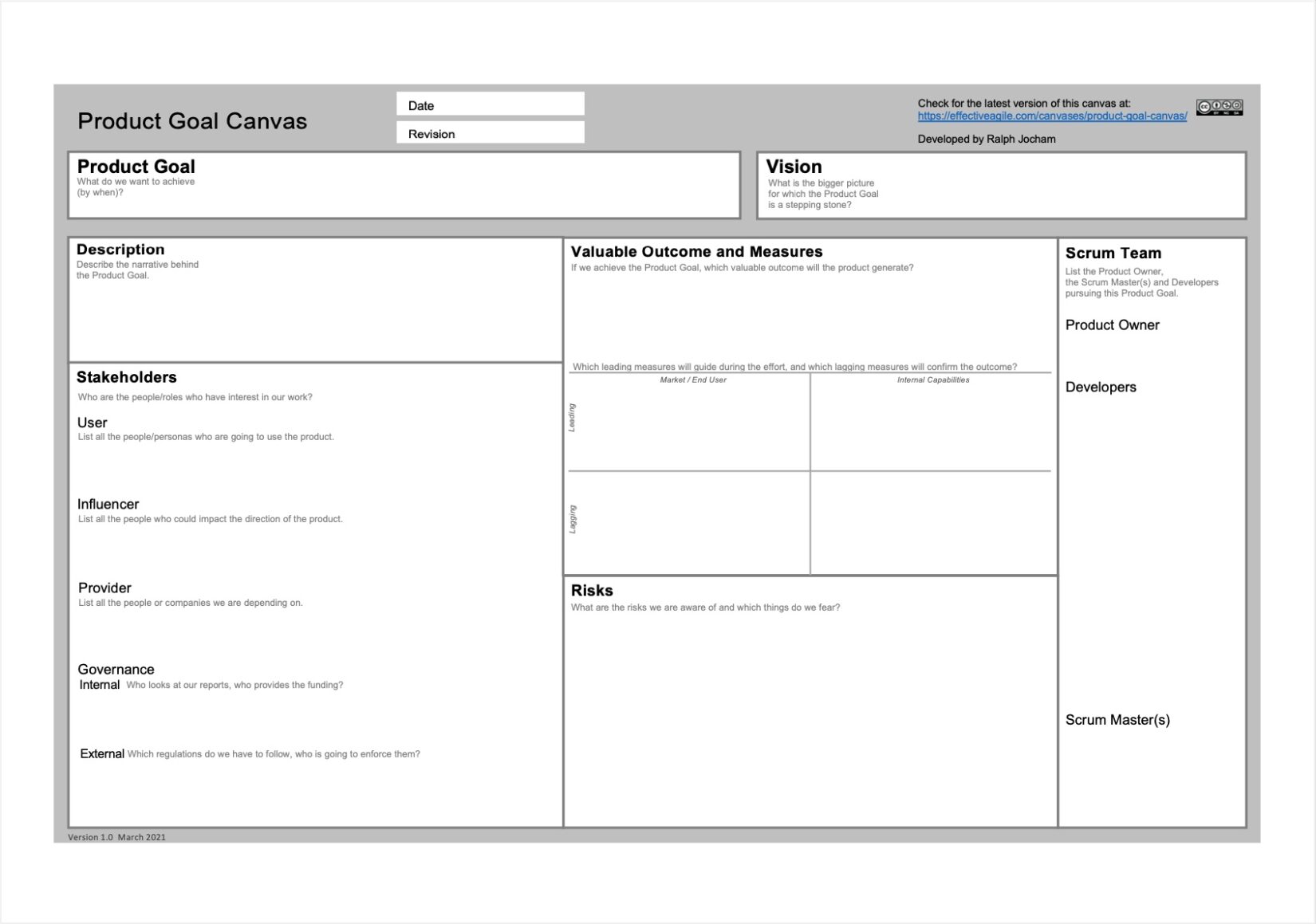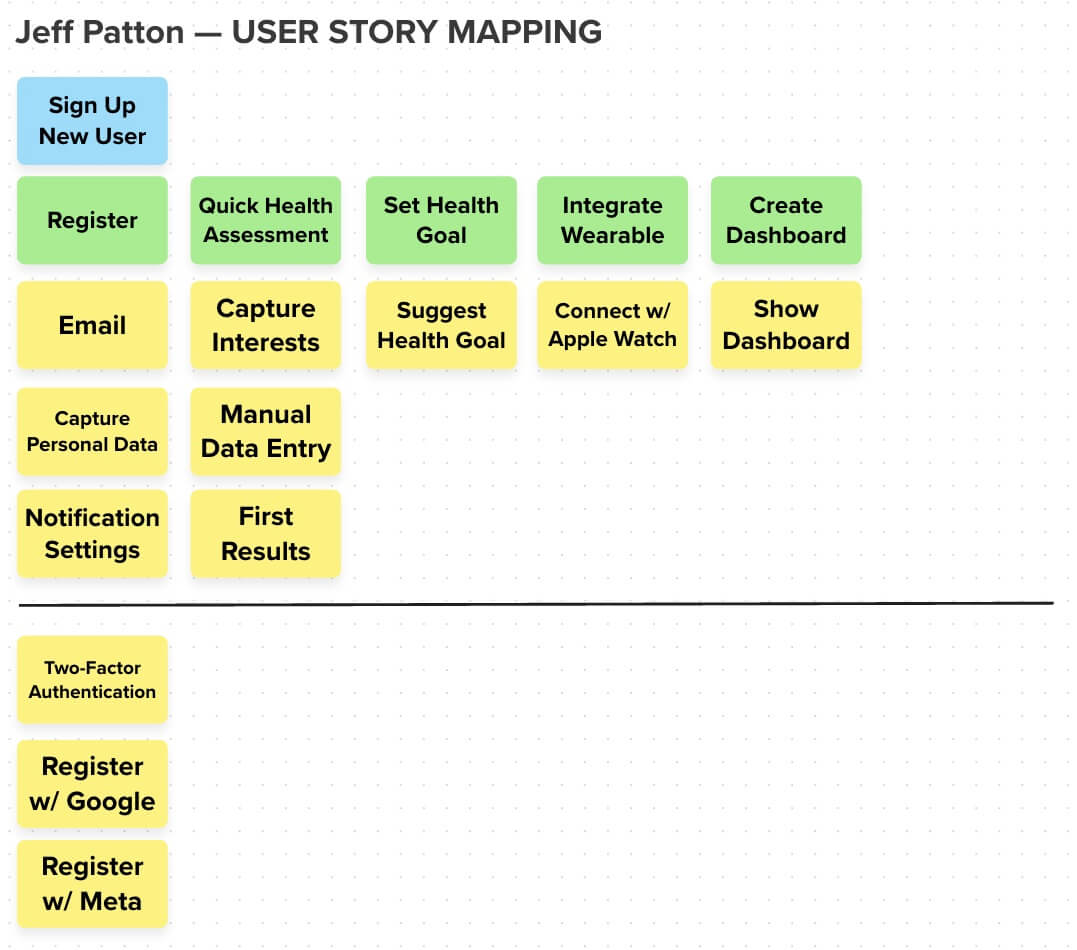TL;DR: Alignment Tools
Understanding and implementing the right alignment tools in agile product development can significantly enhance the effectiveness of your team and organization. Fostering better relationships between stakeholders and teams can ensure strategic clarity, improve adaptability, and maintain a user-centric focus.
This article provides actionable insights on leveraging these tools to build trust, enhance collaboration, navigate risks, and maximize value creation. This will ultimately lead to more successful product outcomes aligned with organizational goals.
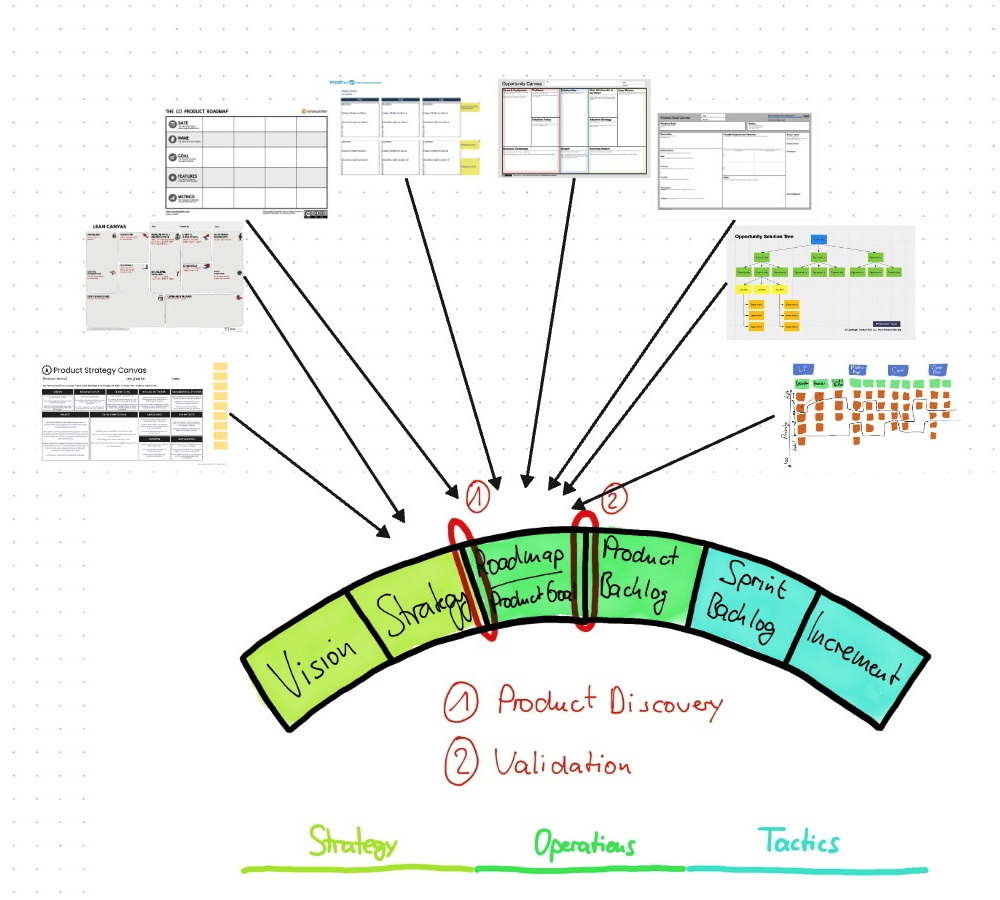
🎓 October 23, 2024: The Advanced Product Backlog Management Course for Just $99!
👉 Please note:
- The course includes membership in the brand-new Hands-on Agile community of my former professional students.
- The course will only be available for sign-up until October 31, 2024!
🗞 Shall I notify you about articles like this one? Awesome! You can sign up here for the ‘Food for Agile Thought’ newsletter and join 42,000-plus subscribers.
🎓 Join Stefan in one of his upcoming Professional Scrum training classes!
Introduction to Alignment Tools
Achieving alignment between stakeholders and teams is crucial for successful product development. The “Big Product Picture” illustrates how integrating vision, strategy, and execution improves return on investment through effective risk mitigation and enhanced relationships.
By aligning key objectives and maintaining clear communication, teams can ensure that every stage of the product lifecycle is aligned with organizational goals. This comprehensive approach helps in product discovery and validation, providing a structured way to visualize the product journey, prioritize tasks, and adapt to changes. As a result, this fosters better decision-making and collaboration and ultimately leads to more successful outcomes.
From Vision to Execution: Aligning Your Team for Success
Creating customer value starts with your team’s product vision, which defines how you plan to deliver on the company’s mission and encapsulates the big picture of what the organization aims to accomplish. This vision, combined with the product strategy—a plan to achieve that vision—forms the foundation of your efforts.
“Operation” focuses on positioning your team for success. This phase involves creating product roadmaps or sequences of Product Goals. These mid-term planning tools answer how your team can contribute to realizing the product strategy. Central to this process is product discovery, which involves forming hypotheses and running experiments. Validated hypotheses then feed into the Product Backlog, ready to be refined and prepared for Sprints.
Finally, we move to “Tactics,” where we focus on realizing the product vision by creating valuable Sprint Goals and, consequently, valuable Increments, improving our customers’ lives while contributing to our organization’s bottom line. This involves turning Product Backlog items from the Sprint Backlog into Increments that can be released to customers.
To ensure your team’s success, you must be vigilant about two critical thresholds:
- Product Discovery: Determine what is worth building.
- Validation: Ensure that anything added to the Product Backlog is validated with real users. Exceptions include non-functional requirements, bugs, prototypes, spikes, or legal necessities.
Everything else must be validated first for a straightforward reason: While you can draft a new product vision on a napkin during a coffee break, building an Increment to test customer reception is costly, both in money and opportunity costs. Therefore, shifting product discovery efforts as far left as possible is crucial.
Let’s explore the alignment tools you can employ to support your team’s journey from vision to execution, ensuring a seamless transition from strategy to tactics.
1. Product Strategy Canvas & Lean Canvas
A good product strategy outlines a long-term vision and is an integrated set of reinforcing choices to enhance success. It defines the market, focuses on uncontrollable customers, and theorizes persuasion tactics. It details needed competencies and resources, is unique to competitors, applies to various organizational levels, and supports hypothesis formulation.
Paweł Huryn’s canvas helps everyone on your team and interested stakeholders understand your product environment, for example:
- What problem do we aspire to solve?
- What do the market and competition look like?
- Do we have a moat?
- Or are we facing cut-throat competition?
Created by Ash Maurya, the Lean Canvas is a variation of the Business Model Canvas designed explicitly for startups. It’s more problem-focused than the Business Model Canvas. It emphasizes aspects like problem identification, solution ideation, and key metrics, making it particularly suited for startups still trying to identify a product/market fit.
There are three main reasons to choose the Lean Canvas for startups before product/market fit:
- Problem and Solution Focus: Startups in their early stages often pivot based on the problem they’re trying to solve and the efficacy of their proposed solution. The Lean Canvas has explicit slots for “Problem” and “Solution,” emphasizing the importance of these aspects.
- Adaptable and Quick: Given its simplicity, startups can quickly modify their canvas as they iterate, which is often required in a startup’s fast-paced, ever-evolving early stages.
- Metrics and Channels: These are crucial for startups to understand early traction and growth. The Lean Canvas provides a dedicated section to outline these.
Comparing the Product Strategy Canvas to the Lean Canvas:
- Product Strategy Canvas: Best for long-term vision, market analysis, and established businesses.
- Lean Canvas: Ideal for startups, emphasizing problem-solution fit and rapid iteration.
- Market Focus: Product Strategy Canvas for broader market and competition understanding.
- Speed and Adaptability: Lean Canvas for quick pivots and adaptable strategies.
- Strategic Depth: Product Strategy Canvas for a comprehensive, integrated strategy.
- Startup Suitability: Lean Canvas for startups seeking product/market fit and business model validation.
Download the alignment tools here:
2. Go Product Roadmap & Now-Next-Later Roadmap
In agile circles, a classic product roadmap, with its feature-centric nature, is not understood to foster alignment and stability, notably when it includes milestones and delivery dates.
Here comes Roman Pichler’s Go product Roadmap to the rescue. The GO roadmap is goal-oriented, emphasizing outcomes such as user acquisition.
It offers significant advantages, particularly for Lean Startup and Scrum-based product development. It emphasizes goal-oriented and outcome-focused planning, ensuring discussions center on strategic objectives like user acquisition. This approach aids in making smart investment decisions and aligns stakeholders with clear time frames and defined goals. Its structure provides comprehensive guidance, including dates for alignment, names for version clarity, goals for strategic value, high-level features, and specific metrics.
Consequently, the GO product roadmap fosters flexibility, adaptability, and iterative development, ensuring that teams achieve meaningful and measurable outcomes.
Alternatively, there is Janna Bastow’s Now-Next-Later Product Roadmap model, which focuses on prioritization and flexibility. Instead of binding the team to strict deadlines, it emphasizes what’s currently in progress, what’s up next, and what the future might hold. This dynamic framework is especially suited for agile environments where change is frequent and adaptability is critical. The “Now-Next-Later” product roadmap template focuses on outcomes, supports OKRs, and connects objectives to roadmap initiatives. Each card represents a problem tied to objectives and ongoing experiments.
The benefits of the Now-Next-Later product roadmap are apparent:
- It is a flexible, human-centric approach that fosters informed decision-making tied to business objectives.
- It streamlines planning by prioritizing immediate needs, embraces varying certainty levels, and ensures impactful product decisions.
- It also saves time by avoiding overcommitment to distant goals.
Source: Janna Bastow, see below.
Comparing the GO Product Roadmap to the Now-Next-Later Roadmap:
- GO Product Roadmap: Focuses on goal-oriented development and measurable outcomes. It is ideal for time-sensitive product launches.
- Now-Next-Later Roadmap: Emphasizes flexibility, adaptability, and prioritization in agile environments.
- Strategic Alignment: GO Roadmap aligns features with specific business goals.
- Agile and Dynamic: Now-Next-Later Roadmap suits fast-paced, evolving projects.
- Time Frame Management: GO Roadmap includes time frames for better planning.
- Long-Term Vision: Now-Next-Later Roadmap provides a clear long-term direction while remaining adaptable to change.
Download the alignment tools here:
3. Opportunity Canvas & Product Goal Canvas
Jeff Patton’s Opportunity Canvas is an excellent tool for evaluating potential product features emerging from product discovery. It helps teams understand the problem, user needs, expected outcomes, and business impact, thereby mastering product discovery and avoiding waste.
The canvas guides teams to define the target audience and their characteristics, identify user challenges and needs, assess existing solutions and the competitive landscape, and understand business challenges and their impacts.
It outlines the solution idea, allocates a preliminary budget, visualizes user interaction, defines outcome metrics, and strategizes user adoption. This comprehensive approach distinguishes verifiable aspects from assumptions, ensuring informed and effective product development.
Ralph Jocham’s Product Goal Canvas provides a structured framework for defining and achieving clear Product Goals, ensuring alignment and clarity for Scrum teams. It breaks down the goal-setting process into specific components, ensuring all aspects are considered.
The Vision highlights the broader context and overarching ambition. The Product Goal box captures the primary objective and any time constraints. The Description section offers a narrative detailing observations, intended improvements, and rationale. Valuable Outcome and Measures define expected benefits and introduce leading and lagging measures. The Stakeholder box identifies essential stakeholders and engagement strategies. The Risks section uncovers potential challenges, and the Scrum Team box details the team members responsible for achieving the goal. This holistic blueprint guides teams from vision to execution, ensuring a comprehensive, aligned approach to product development.
Source: Ralph Jocham, see below.
Comparing the Opportunity Canvas to the Product Goal Canvas:
- Opportunity Canvas: Excellent for user-centered product discovery, competitive analysis, and linking features to business outcomes.
- Product Goal Canvas: Ideal for Scrum teams defining clear product goals, aligning with vision, and balancing proactive and reactive measures.
- User Focus: Opportunity Canvas for a deep understanding of users and the market.
- Goal Alignment: Use the Product Goal Canvas to align product development with organizational vision.
- Risk and Stakeholder Management: Product Goal Canvas for comprehensive planning and risk assessment.
- Validation vs. Execution: Use the Opportunity Canvas for validation and discovery and the Product Goal Canvas for structured execution.
Download the alignment tools here:
4. Opportunity Solution Tree & User Story Mapping
Teresa Torres’ Opportunity Solution Tree is a map to guide the continuous discovery journey in product development. It visually represents the plan to achieve a desired outcome, making implicit assumptions clear. This approach aids in navigating opinion conflicts, framing decisions, aligning team understanding, and communicating the path to the desired goal.The process starts with identifying the desired results, such as user engagement, business metrics, or market influence, and establishing measurable indicators to track your progress toward these desired outcomes.
Recognizing your target users’ main challenges or needs identifies areas with significant impact potential while understanding business leverage points highlights where addressing these needs can benefit your business most. Listing potential features and enhancements addresses these identified opportunities, emphasizing iterative exploration to find the best solutions. Designing experiments as validation mechanisms ensures solutions address the opportunities before full commitment. Establishing learning milestones tracks progress and guides whether to pivot or persevere based on insights gained.
Jeff Patton’s User Story Mapping is a holistic product development approach that emphasizes the user’s journey and experience. By visually mapping out user stories in the context of the overall user journey, teams, and stakeholders gain a shared understanding and can more effectively prioritize features.
User Story Mapping offers numerous benefits, including creating a common visual framework that ensures shared understanding among team members and stakeholders regarding the user’s journey and the overall picture. It enables effective prioritization of features based on user needs and experience, encourages cross-functional collaboration by allowing stakeholders to co-create the user journey, and remains adaptable to changes and new insights, ensuring a user-centric product development process. Additionally, it facilitates continuous delivery by breaking down features into smaller, deliverable tasks and supporting incremental releases.
Comparing the Opportunity Solutions Tree to User Story Mapping:
- Opportunity Solution Tree: Ideal for outcome-oriented development, focusing on strategic opportunities and business leverage.
- User Story Mapping: Best for visualizing and understanding the user’s journey, ensuring user-centric product development.
- Strategic vs. User-Centric: Opportunity Solution Tree for strategic planning and the User Story Mapping for user journey focus.
- Diverse Solutions vs. Detailed Prioritization: Opportunity Solution Tree encourages exploring various solutions; User Story Mapping aids in detailed feature prioritization.
- Experimentation and Adaptability: Opportunity Solution Tree for structured experimentation; User Story Mapping for adaptability and continuous delivery.
- Visual Tracking vs. Collaborative Mapping: Use the Opportunity Solution Tree to track progress towards outcomes and User Story Mapping to understand user stories collaboratively.
Download the alignment tools here:
Conclusion
There are four main advantages to applying alignment tools and getting everyone—stakeholders and team members—on the same page:
- Trust Building: Harness alignment tools that build and sustain trust throughout the product journey.
- Collaboration: It’s about more than just working together; it’s about fostering genuine partnership between the team and stakeholders to create a shared understanding of the Why and What of our journey.
- Risk Navigation: Product discovery isn’t without its challenges, but we can efficiently navigate these risks with the right approach.
- Value Creation: Above all, always aim to maximize the value of every effort, ensuring that each team member’s contribution to solving our customers’ problems also drives the organization forward.
Armed with these insights and the tools we’ve explored, you’re now better equipped to ensure you build products that resonate with users and serve the organization’s objectives.
What alignment tools do you use to create a better working relationship with stakeholders and among team members? Please share with us in the comments.
📅 Scrum Training Classes, Workshops, and Events
You can secure your seat for Scrum training classes, workshops, and meetups directly by following the corresponding link in the table below:
See all upcoming classes here.
You can book your seat for the training directly by following the corresponding links to the ticket shop. If the procurement process of your organization requires a different purchasing process, please contact Berlin Product People GmbH directly.
✋ Do Not Miss Out and Learn more about Alignment Tools — Join the 20,000-plus Strong ‘Hands-on Agile’ Slack Community
I invite you to join the “Hands-on Agile” Slack Community and enjoy the benefits of a fast-growing, vibrant community of agile practitioners from around the world.
If you would like to join all you have to do now is provide your credentials via this Google form, and I will sign you up. By the way, it’s free.
Prepare yourself for Alignment Tools by studying the free Scrum Anti-Patterns Guide:
